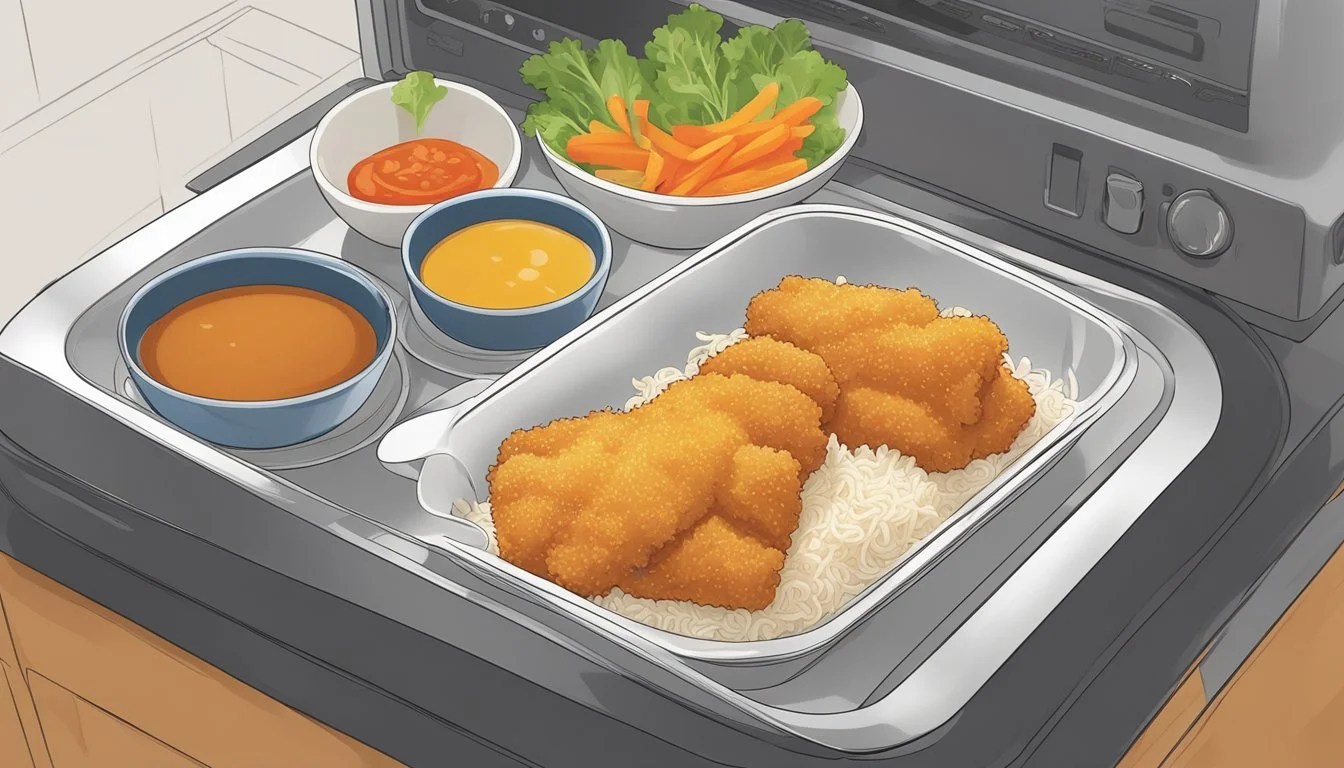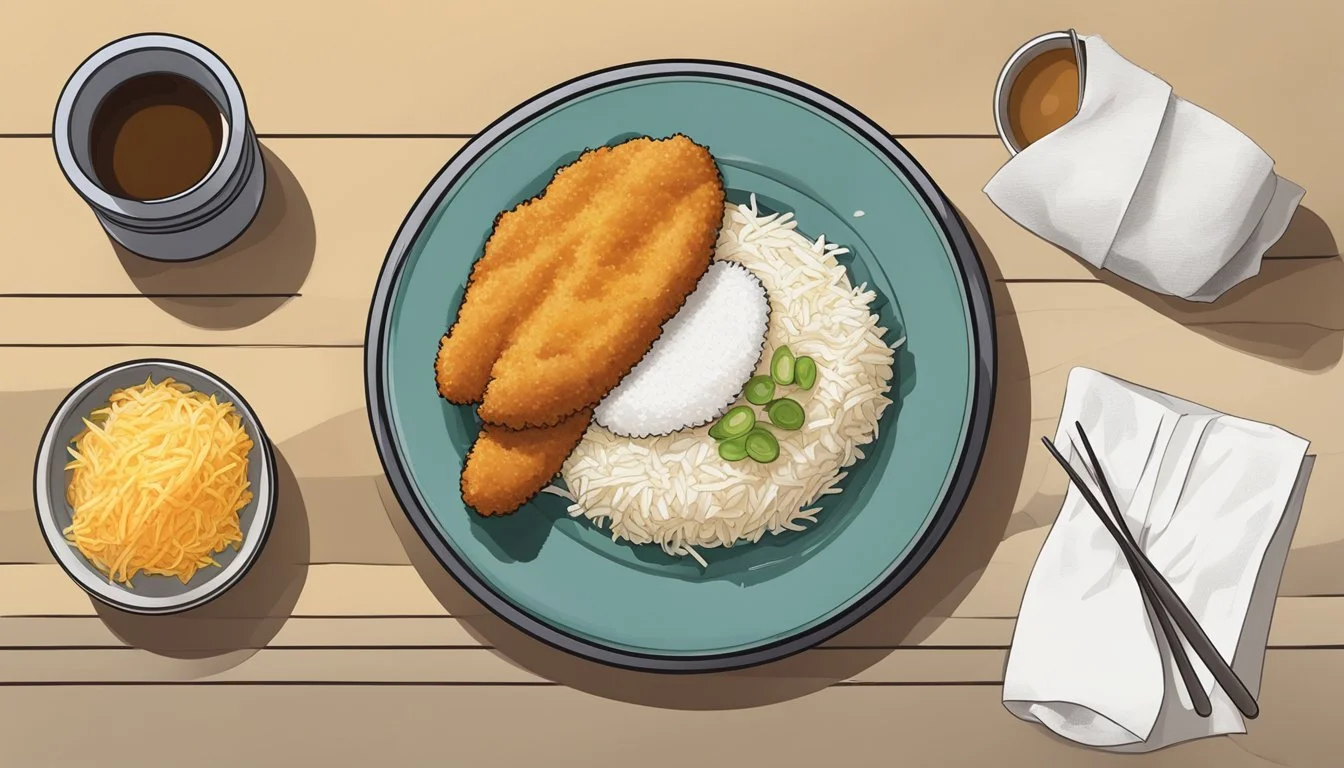How to Reheat Chicken Katsu for Perfect Crispiness Every Time
Learning how to reheat chicken katsu effectively ensures that your leftovers are just as delicious and crispy as when they were freshly made. No one enjoys dry or soggy chicken, so the right reheating method is essential for maintaining that perfect balance of crunch and tenderness.
Whether you’re using an oven or an air fryer, bringing your katsu back to life is straightforward with a few key techniques. Preheating your appliance to the right temperature and allowing the chicken to reach room temperature before reheating can make all the difference in preserving its texture and flavor.
This guide will cover several reheating methods, providing clear instructions to help you enjoy your chicken katsu as if it were freshly prepared. Follow these steps to ensure your meal is satisfying and delicious every time.
What Is Chicken Katsu?
Chicken katsu is a popular Japanese dish known for its crispy exterior and juicy interior. This fried chicken cutlet is often served with a side of rice, salad, and katsu sauce or tonkatsu sauce.
Creating the Perfect Chicken Katsu
Ingredients and Preparation
The main components of chicken katsu are chicken thighs or breasts, panko breadcrumbs, and flour. The chicken is first seasoned, then dredged in flour, dipped in beaten eggs, and finally coated with panko breadcrumbs. This preparation ensures the iconic crispy texture.
Cooking Process
The breaded chicken is fried until golden brown. The oil should be hot enough to cook the chicken through while maintaining its juiciness. Proper frying technique prevents the cutlet from becoming greasy.
Serving Suggestions
Chicken katsu is best served immediately to enjoy its crunchy crust. Pair it with rice, shredded cabbage, and a drizzle of katsu or tonkatsu sauce. This combination highlights the balance of flavors and textures.
Preparation Before Reheating
Proper preparation ensures that leftover chicken katsu retains its crispy texture and remains flavorful after reheating. Essential steps include bringing the chicken katsu to room temperature and using airtight containers to store leftovers.
Bringing to Room Temperature
Before reheating, it is important to bring the chicken katsu to room temperature. Doing this prevents uneven heating, which can result in a soggy exterior and a cold interior. Take the chicken katsu out of the refrigerator and let it sit for about 10-15 minutes. This short wait allows the katsu to heat more evenly and maintain its crispy exterior.
Leaving the chicken at room temperature also minimizes the risk of the katsu drying out during the reheating process. By ensuring that the chicken is no longer cold, you set up the reheating environment to better preserve its original qualities.
Using Airtight Containers
Storing chicken katsu in airtight containers is crucial for maintaining its flavor and texture. Airtight containers help preserve moisture and prevent the chicken from becoming dry. When leftovers are stored in a container with a tight seal, the original flavors are retained more effectively.
Using a good airtight container reduces air exposure, which can lead to unwanted sogginess. This method ensures that reheated chicken katsu remains more flavorful and closer to its initial state. Additionally, when storing the leftovers, make sure they are placed in a single layer to avoid the pieces sticking together, making reheating smoother.
Reheating Techniques
Reheating chicken katsu properly is essential to maintain its crispy crust and moist interior. Various methods can be used, each with its own pros and cons. Below are some effective techniques.
Oven Method
The oven method is ideal for even heating and retaining the chicken katsu’s crunch.
Preheat the oven to 375°F (190°C).
Place the cold chicken katsu on a baking sheet lined with parchment paper.
Optionally, cover the katsu loosely with aluminum foil to prevent excessive browning.
Bake for 10-15 minutes, or until thoroughly heated.
For extra crispiness, remove the foil for the last few minutes.
This technique balances moisture and crispiness, ensuring the katsu remains tasty.
Air Fryer Method
An air fryer is an excellent choice for reheating chicken katsu quickly while keeping it crispy.
Preheat the air fryer to 350°F (175°C).
Arrange the chicken katsu in a single layer in the air fryer basket.
Cook for 5-7 minutes, checking halfway through to ensure even heating.
Lower temperatures, such as 320°F (160°C), can prevent drying out, but may increase cooking time slightly. The air fryer method helps maintain a golden crust.
Alternative Methods
Two notable alternative methods include the toaster oven and stovetop reheating.
Set the toaster oven to 375°F (190°C).
Place the katsu on a wire rack over a baking tray.
Heat for 8-10 minutes, checking for desired crispiness.
Stovetop:
Heat a non-stick skillet over medium heat.
Add a small amount of oil to the pan.
Place the katsu in the pan and heat for 3-4 minutes on each side, ensuring even heating.
These methods are practical for quick reheating and can achieve a decent balance of moisture and crunch.
Determining Doneness
Ensuring that chicken katsu is properly reheated is crucial for both flavor and safety. The objective is to achieve a juicy chicken with a crispy crust while being safe to consume.
Checking Internal Temperature
Using an instant-read thermometer helps verify if chicken katsu is heated thoroughly. Insert the thermometer into the thickest part of the chicken cutlet, avoiding the crust. The internal temperature should reach 165°F (74°C) to ensure that the meat is safe to consume.
Maintaining the ideal temperature preserves the juiciness of the chicken while avoiding overcooking, which can dry it out. This method ensures that the chicken katsu retains its crispiness and delicious flavor without compromising food safety.
Serving Suggestions
When enjoying reheated chicken katsu, pairing it with complementary side dishes and knowing how to properly store leftovers can elevate your meal experience. Here's how to make the most out of your chicken katsu dish.
Accompaniments for Chicken Katsu
For a complete meal, accompaniments are essential. Steamed rice or seasoned Japanese rice makes an excellent base. Katsu sauce or tonkatsu sauce adds a flavorful kick.
Consider adding Japanese curry for a heartier option. A cabbage salad, often dressed with a tangy vinaigrette, provides a refreshing contrast.
Miso soup can serve as a comforting side, while shredded cabbage can add a crunchy texture. Pickled vegetables like carrots and radish enhance the overall flavor profile.
For a less traditional pairing, try mashed potato or macaroni gratin.
Storing and Next-Day Tips
Storing chicken katsu properly is crucial to maintain its taste and texture. Place the pieces in an airtight container and refrigerate them. They can last about 3-4 days.
To reheat, use an air fryer at 350°F (175°C) for crispy results, or opt for an oven at 375°F (190°C) to retain moisture. Avoid microwaves, as they can make the katsu soggy.
Consider reheating only what you plan to consume to preserve the quality of leftovers for future meals.
Preserving Chicken Katsu
Proper preservation ensures your chicken katsu remains flavorful and crispy. Consider the best methods for freezing and storing to keep it fresh.
Freezing and Storage
Freezing: Freshly cooked chicken katsu should be allowed to cool to room temperature before freezing. Wrap each piece in plastic wrap or aluminum foil to prevent freezer burn and place them in an airtight container or freezer-safe bag. Label with the date to track storage time; chicken katsu can be frozen effectively for up to three months.
Storage: For short-term storage, refrigerate leftover chicken katsu within two hours of cooking. Store it in an airtight container to maintain its crispiness and flavor. Leftovers can be kept in the refrigerator for up to four days.
Proper storage methods will prevent sogginess and maintain the quality of the chicken katsu for future enjoyment.
Creating Variations
Reheating chicken katsu opens up opportunities to reinvent the dish into something new and equally delicious. Use these creative ideas to enjoy your katsu in different ways.
Katsu Sandwich and Curry
Katsu sandwich is a delightful way to enjoy leftovers. Start by placing reheated chicken katsu between slices of soft Japanese milk bread (shokupan).
Add shredded cabbage for crunch.
Use katsu sauce for tangy flavor.
Optionally, add a bit of Japanese mustard for a spicy kick.
For katsu curry, pair reheated chicken katsu with rich Japanese curry.
Place the cutlet on a bed of steamed rice.
Ladle hot curry sauce over the chicken and rice.
This transforms the dish into a hearty meal full of familiar flavors.
Adapting the Recipe
For a twist on the traditional, consider using pork cutlets instead of chicken. Pork adds a different flavor profile and texture while adhering to the same reheating methods.
Reheat the pork cutlets similarly to chicken.
Another variation is using chicken tenders for a smaller, bite-sized version, perfect for snacks or appetizers.
They reheat quickly and can be served with various dipping sauces beyond katsu sauce, like spicy mayo or a simple ponzu.
These adaptations help maintain the essence of katsu while providing an opportunity to experiment and enjoy it in new ways.



